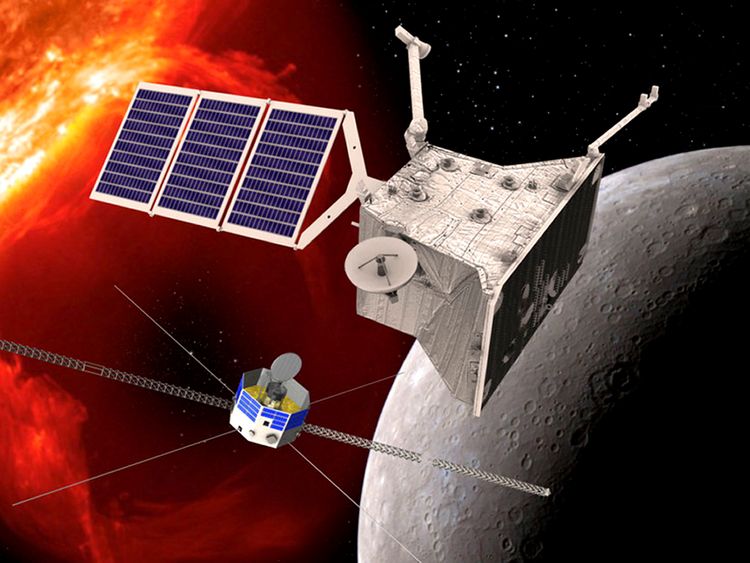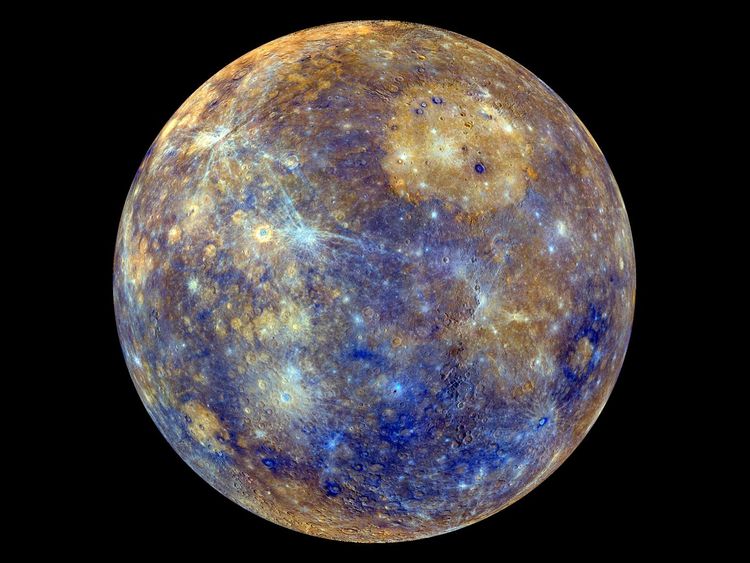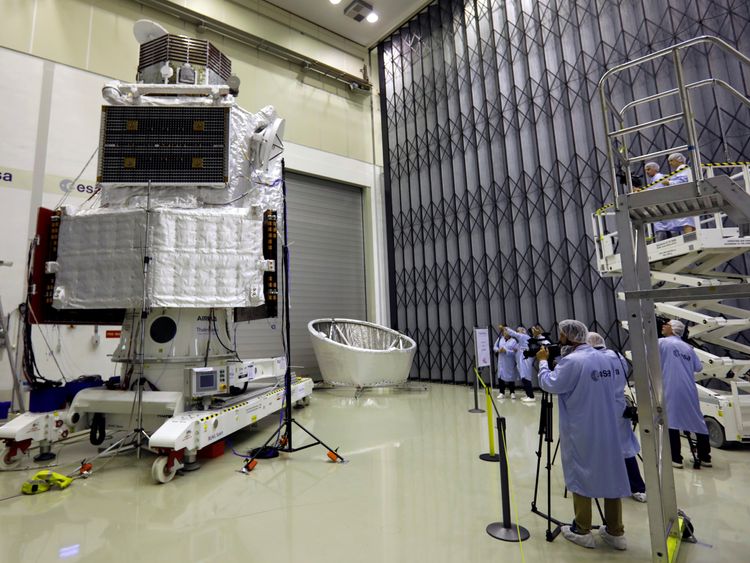European and Japanese space agencies have launched their first mission to Mercury from its space port in Kourou, French Guiana.
The British-built BepiColombo took off aboard an Ariane 5 rocket at about 2.45am UK time on Saturday to begin its seven-year, 5 billion mile (8.5 billion km) journey to the closest planet to the Sun.
Stephane Israel, chief executive of rocket-maker Arianespace, confirmed the launch had been a success.
"Arianespace is delighted to announce that BepiColombo has been separated as planned on the targeted escape orbit and is now on its way towards Mercury," he said.
The £1.4bn mission is complicated by the intense gravity pull of the sun, forcing the spacecraft to take an elliptical path that involves two fly-bys of Venus and six of Mercury itself.
BepiColombo comprises of two orbiters: one European and the other Japanese, which will circle the planet while mapping and probing its surface and enveloping magnetic field.

Scientists hope to unravel some of Mercury's mysteries, such as the reason for its over-large iron core, its spectacular volcanic vents, and why the planet's dark side emits x-rays.
They hope the answers they get will shed new light on the origins and evolution of the solar system.
Speaking after the launch, Professor Gunther Hasinger, the European Space Agency's director of science, said: "This is truly breathtaking. We have today written history.
"We have sent the most complex stack of spacecraft that ever have been conceived into space, and to a very long journey to an environment which is truly out of the Earth; truly out of this world."

The Mercury Transfer Module (MTM), carrying the two orbiters, was built in Stevenage by the Defence and Space division of aerospace company Airbus.
Key elements of ESAs Mercury Planet Orbiter were also assembled by Airbus in the UK.
A key feature of BepiColombo is that it is the first interplanetary mission to employ advanced electric ion propulsion technology.
Four Star Trek-style "impulse engines", two firing at a time, will emit beams of electrically charged, or "ionised", xenon gas.

They will be used not to accelerate the craft but to act as a brake against the sun's enormous gravity.
More from ESA
Only two spacecraft have previously visited Mercury. Nasa's Mariner 10 flew past the planet three times in 1974-75 and the American space agency's Messenger probe orbited Mercury from 2011 to 2015.
BepiColombo was named after the late Giuseppe "Bepi" Colombo, an Italian scientist and engineer who played a leading role in the 1974 Mariner 10 mission.
[contf] [contfnew] 
Sky News
[contfnewc] [contfnewc]







